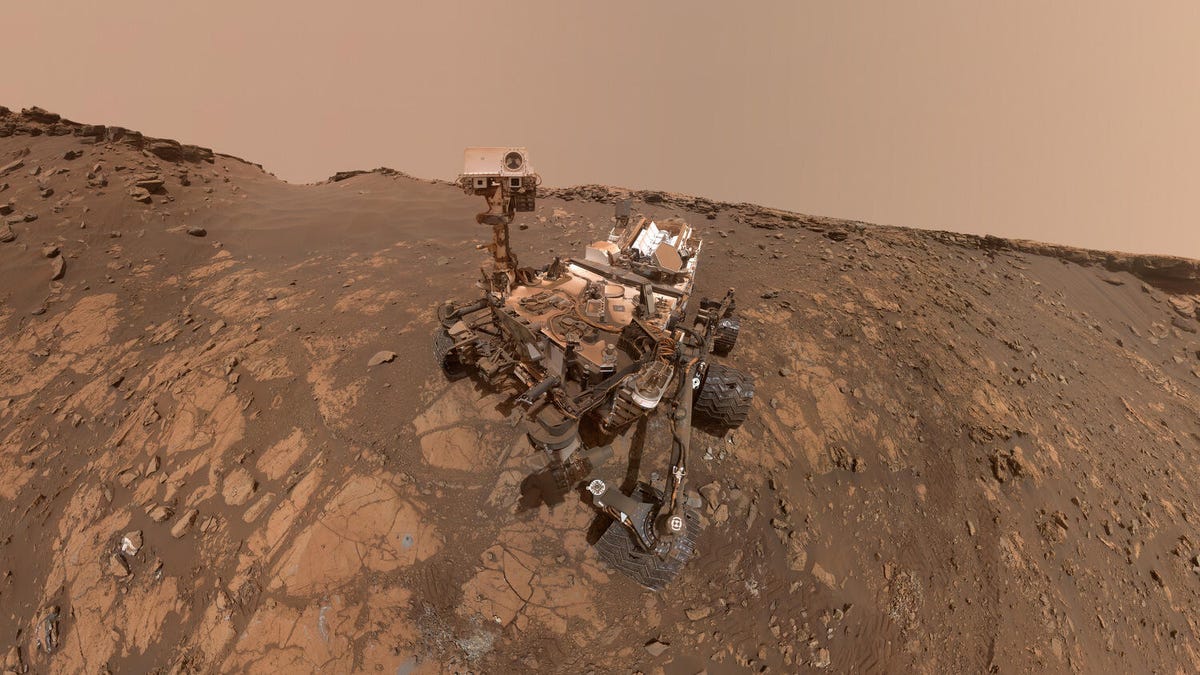NASA keeps Curiosity rover moving as scientists work from home
Working remotely has its challenges, even for the Mars rover team.

NASA says the coronavirus pandemic hasn't slowed down the Curiosity rover.
Working from home during the coronavirus pandemic is an adjustment for everyone, even for the NASA scientists operating the Curiosity rover on Mars. The Curiosity team began fully remote operations due to the coronavirus in March, according to a release Tuesday from NASA's Jet Propulsion Laboratory.
Headsets and monitors were distributed to employees but some sophisticated hardware, like 3D-imaging goggles used to navigate the rover through the rocky Mars landscape, couldn't be sent home, NASA said. The team resolved the hardware issue by instead using simple red-blue 3D glasses to help plan drives and arm movements.
The team is also relying more heavily on video conferences and messaging apps in order to communicate, NASA said. Normally, the Curiosity team works with hundreds of other scientists around the world. To program an action for the rover alone takes 20 or so scientists, according to NASA.
Regardless of the hurdles, NASA said the Curiosity rover is as productive as ever.
Curiosity is NASA's only functioning rover on Mars at the moment, but it will hopefully soon be joined by Perseverance, which is scheduled to launch in July. Curiosity has been in residence on Mars since 2012 and it continues to seek out signs of ancient microbial life.

